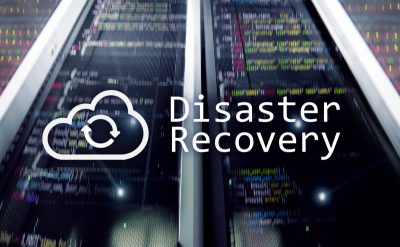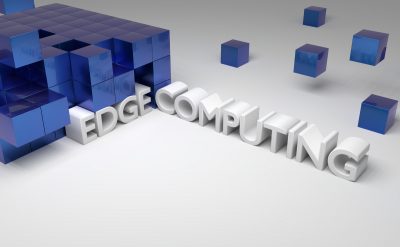Application containerization is an OS-level virtualization method used to deploy and run the distributed application. Application containerization runs without launching an entire virtual machine (VM) for each app with multiple isolated application or services running on a single host and access using the same OS kernel. Containers work on minimum metal systems, cloud instances and virtual machines across Linux and select Windows and Mac OS.
How do application containerizations work?
All the application containers include the necessary run time components such as files, environment variables, and libraries. All the components are necessary to run the desired software application; containers consume fewer resources than a comparable deployment on a virtual machine because containers can share several of their resources without getting using the full operating system to be available for each application separately. The resourcefulness of applications tends to work on a different domain, as a complete set of information is executed in a container is the image. One of the most common applications containerization technology is Docker, specifically aligned towards the open source Docker engine and contained based on universal runtime runC. The main competitive offering is CoreOS container engine while it’s an App Container spec as its open, standard container format, it can also execute the Docker container images.
Application containerization functions differently as we see with distributed applications and microservices, as each of the containers operates independently of others while using a minimum of the resources from the host. When a microservices wants to communicate with other levels of microservices through application programming interfaces, to meet the rising demand of applications virtualization layer can scale up the microservices to distribute the total load. It leads to improved flexibility for the applications and microservices. The application layer offers improved flexibility for the developers, wherein a user can create a new library inside the container. To update an application, a user can make changes to the container image code and redeploy the image in the container; the changes could be run on the host OS.
Virtualization and system containers vs. Application Containerization
Server virtualization separates the operating system and applications from the hardware of deployment or virtual resources. A hypervisor layer resides between memory, computing, storage, and the operating system, applications, and services. It has made that each application to work completely of different level of OS. It leads to better host management as various applications with different Operating system can run on the same host. However, this can result in greater consumption of resources than containers, and it requires more Operating system licenses than the container setup. Containers use the virtual machine to process, meaning that a host of machines could have multiple OS supporting the various containers all sharing the same physical resources. Application containers develop a place wherein the developers can store app code to consume host resources without giving the required additional need for acknowledgment or depend upon the existing of the applications using the same OS. System containers perform a role similar to virtual machines but without acknowledging the hardware virtualization requirement.
System containers are also known as virtual machines but without hardware virtualization. System containers also are known as infrastructure containers; include different images such as host operating system, application libraries, and execution code. System containers can host application containers. Containers also rely on images they have a long-standing and non-requisite demand like application containers. An admin can update the change in the system container with configuration management tools that is far better than rebuilding the images when the change occurs while the earlier ones are destroyed. The cloud market is rapidly maturing, and this will mean that leaders will be sailing towards an improved environment for cloud than chasing the domain. There has been a strong feeling for vendor lock-in so more, and more enterprises are seeking the cloud public as a platform to store the data. In the public cloud, the containerization is much more pronounced as reliance on containerization of applications enables IT, professionals, to deploy the applications anytime or anywhere. Containerization is a platform that assists in easily migrating applications across different platforms. Currently, almost 26 percent of the environment is using the containerized application according to the 2019 State of Multicolored report. The numbers are all set to double in the next two years as the cloud adoptions are increasing vertically. If we look towards the containerization, it’s sufficiently high that nearly one-third of the containerized applications are critical for the business according to the recent report.
The report studied the various cloud challenges and stated that only 53 percent of the respondents are concerned with vendor lock-in, while 47 percent are indicating the confidence have agreed for the abstracted infrastructure as one of their primary factor for using the cloud services. Close to 32 percent of the respondents have agreed to use more than one platforms for cloud services, and 29 percent are using three or more. While 83 percent of respondents are believed to have been using workloads more easily across the clouds. AWS is one of the most frequently used cloud platforms with 55 percent of the respondents saying it, Microsoft Azure stands with 52 percent, 45 percent of respondents operate a private cloud as a part of hybrid cloud deployment. Only 22 percent have agreed to be using the Google cloud platform, though most of them seemed to move to the multi-cloud platform over the next five-year plan, so the numbers will greatly change over time.
Conclusion
Containerization attributes towards better gains in efficiency for memory, CPU, and storage compared to the traditional virtualization and physical application hosting. The requirement of overhead in the Virtual Machine (VM) makes it an undaunted application; it’s possible to support many more applications containers on the same infrastructure. Portability is one of the major benefits with containerization, as long as the OS remains the same across the system an application container can run on any system and in any cloud without any need of coding changes.
To know more, you can download our latest whitepapers on cloud solutions.














![[Things to Know] Before Selecting Cloud Solutions](https://d2qt3hjxf3fk7j.cloudfront.net/wp-content/uploads/2020/02/13083906/Cloud-Solution-400x247.jpg)